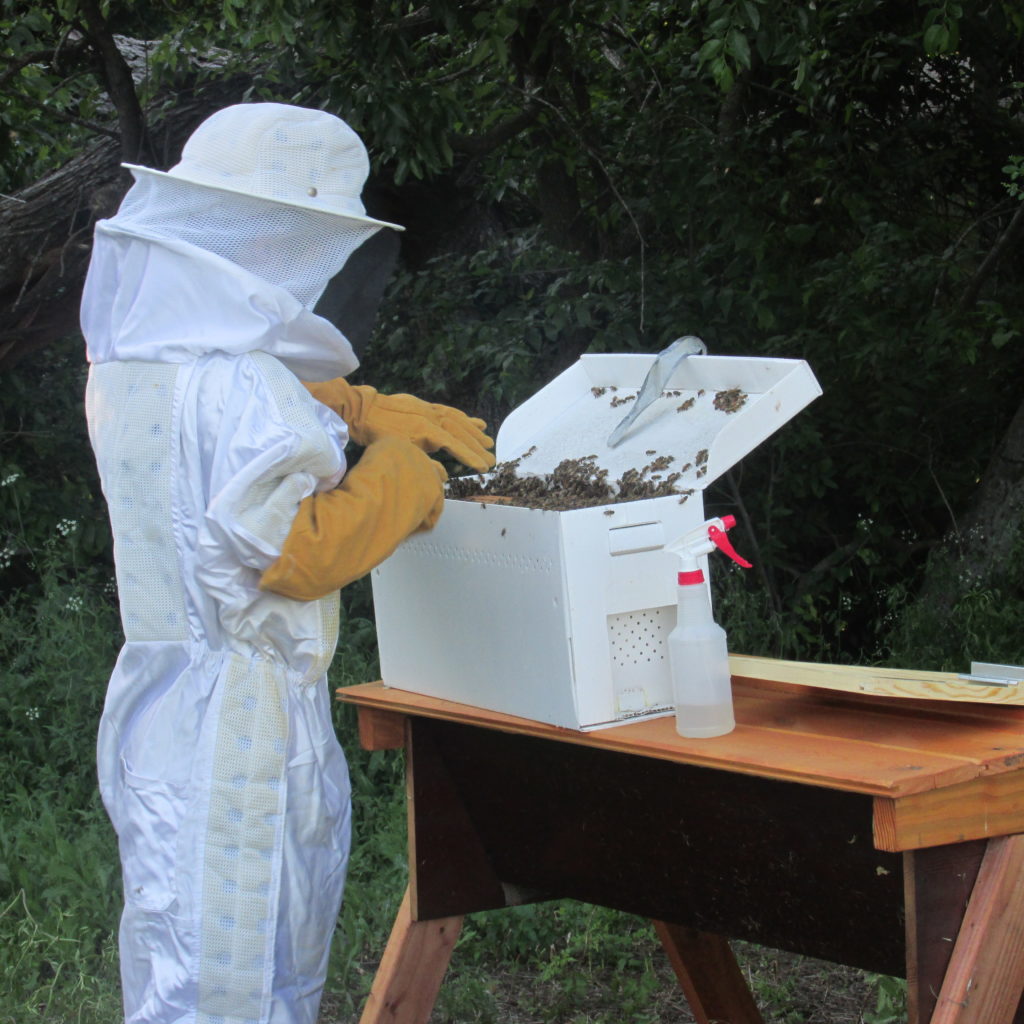
I am so proud of my Rabbit Shepherd!(my brave & adventurous son) Now, I guess we will have to call him bee shepherd also! See how he got a bee keeping scholarship from the Trinity Valley Bee Keeping Association. We picked up his nuc from http://beegirl.biz/, the best bee teacher ever!
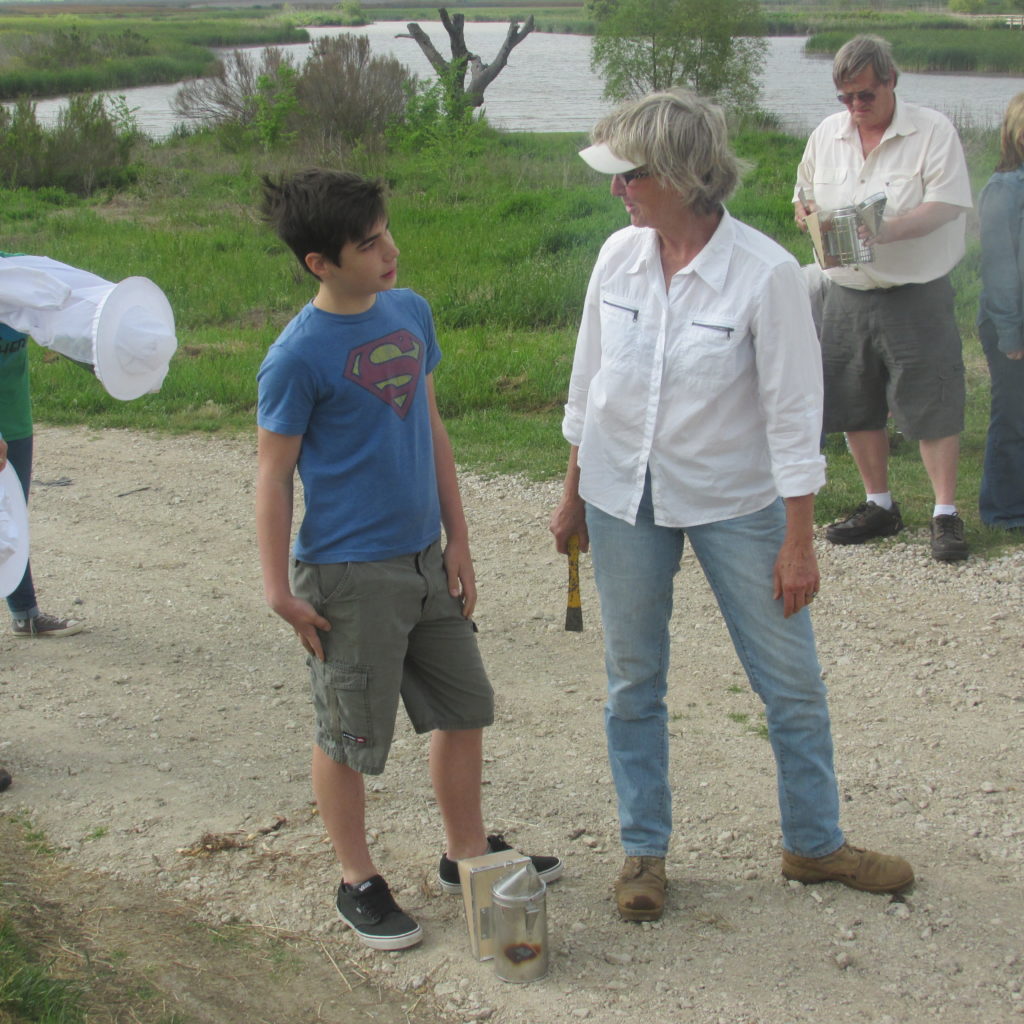
For those of you who are “newbees”; a nuc is a box with about 10,000 bees in it, complete with a queen, that has been laying eggs. It was surprising how much honey was in our little box of bees! We can’t forget that the honey is their source of food to make it through the year to come, not just for our enjoyment. This box/nuc was heavy and each frame was full of bees and capped brood(baby bees) and honey!
If you are installing a nuc this Spring, and need step by step instructions, see bottom of post.
First of all, I have learned that for some reason new adventures don’t go so calmly in my life. Thank goodness I am used to the chaos of 5 kids. I probably don’t realize how much joyful noise I totally have learned to take in stride. I say this because, we were going 70 mph on the freeway home when I look in my rear view mirror and what do my eyes see? But of course, bees! Just a few bees, but that was enough to send my imagination into over drive along with my engine. I was fairly confident that I could get out of that ticket if I had to. Everything went well though, we arrived at our hive safe and sound.
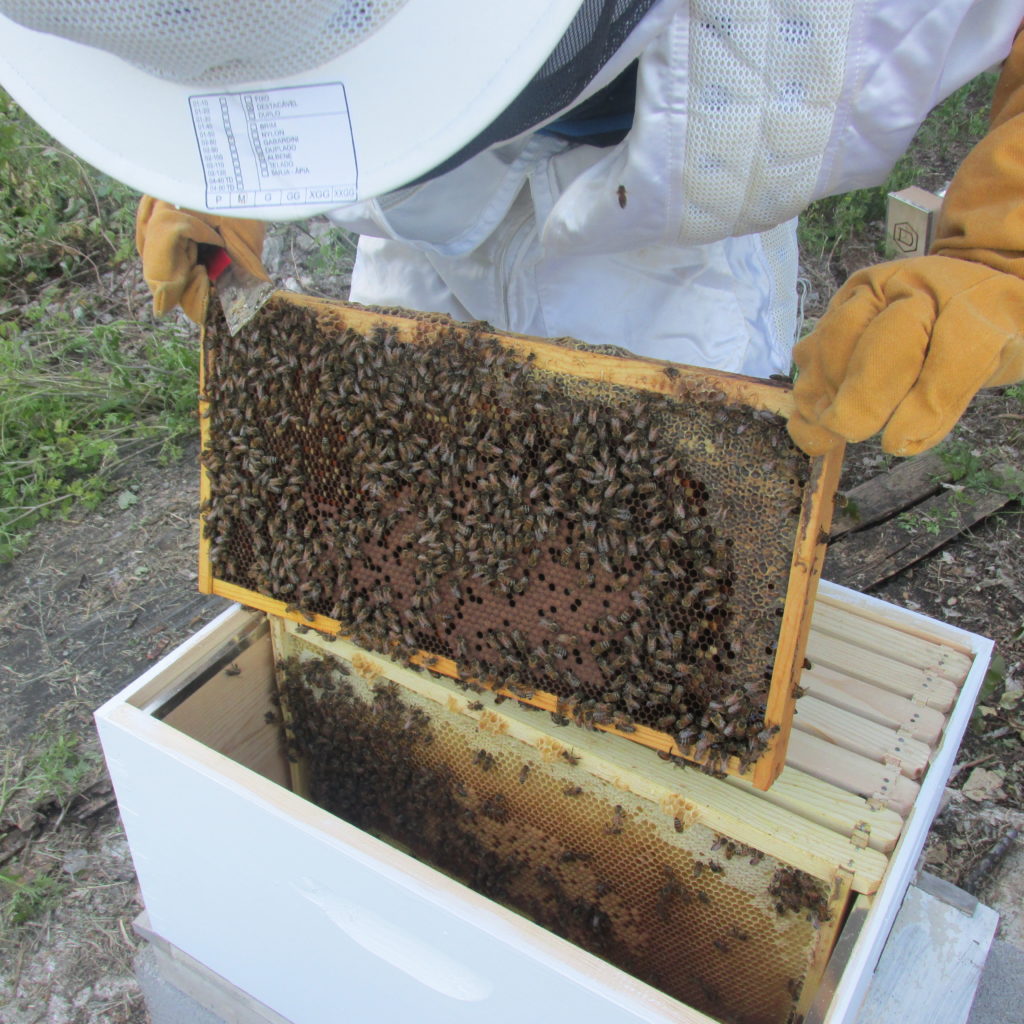
We were told to spray the bees lightly with sugar water to keep them from flying so much. I just have to say here that we are NOT used to the buzzing sound of bees surrounding us, filling the air with their frenetic activity. I for one have to say that it freaks me out a little! Sometimes I have to stop myself and say, “Breath the air in and now push it out of your lungs. In and then out.” Just say’ in, the thought of bee keeping is a whole different thing than the actual BEE KEEPING! The spraying of sugar syrup just didn’t do the trick.
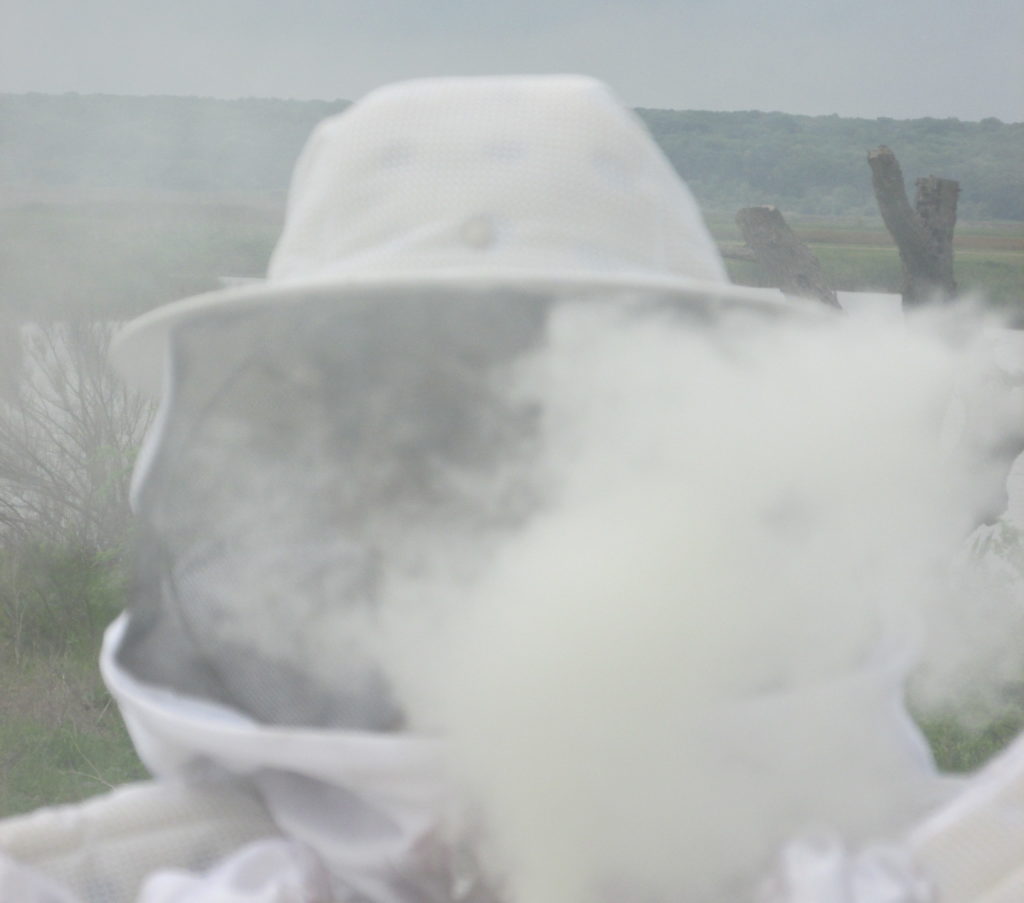
My son and I looked at each other, stopped everything and went for the smoker. After we returned with the smoker everything started to get a little bit more manageable for us.
We followed the instructions carefully, placing each frame in the newly painted Langstroth hive. It was very important for us to reduce the entrance hole(make the entrance hole to the bee hive as small as possible) because the community garden is buzzing with bees right now. Yay for blackberry bushes! All those bees would love to rob our new little hive of all it’s sugar syrup(provided by us) and it’s stores of honey. A smaller door is easier to guard, right? Clever, isn’t it? Thank you for veteran bee keepers and the good advice they give!
We had planned to look for the queen, but in the end we were just proud of ourselves for getting the bees in the hive. We figured there would be plenty of time for that later. I have to say in closing that I find watching bees better than any t.v. show! “I know dinner needs to be cooked, dishes need to be done and we have no more clean towels, but I’ll be right back, I just want to go check on the bees one more time!”
We are so thankful to all the wonderful people that made our bee adventure possible. Thank you to God for orchestrating this new adventure! Thank you, Christi, our teacher, Jerry and Earl, mentors and Dadant bee suppliers. The next check into the hive will be in a few days. We will keep you posted. Maybe we will get a picture of the Queen! Our bee teacher said the queen in our hive was, what they call blonde, being very light in color. So I will call this hive “Blondie and the girls” Shhhh, don’t tell Cam! I am sure he will HATE that name. Why do I find a small joy in that? If you knew him you would understand. Hee hee!
Installing a Nuc Nucleus Hive “Nuc” into a Langstroth hive:
KEEP THE NUC/S COOL. When transporting the nucs; keep them shaded and as cool as possible. Inside a vehicle – keep the AC going on cool/cold. NEVER LEAVE THEM INSIDE A HOT CAR! Ideal transport is in the back of a pick-up with air flow around them. OPEN THE NUC DOOR WHEN YOU GET THEM HOME You don’t have to put them into your hive boxes right away, if you need to wait a day or two, that’s fine. Be sure to set them in the location you have already determined for the hive.
HAVE YOUR WOODENWARE READY. Then put on your protective gear and open the nuc door to let the bees fly. This is very important! A deep super for each nuc, hive cover and bottom board, place it off the ground on cement blocks or other type of hive stand. Set cement blocks with the holes horizontal.
PREPARE SUGAR SYRUP FOR FEED; mix 50/50 sugar to water or plus/minus 5 lbs. sugar to a gallon of water. Put some of this syrup in a spray bottle.
REDUCE THE ENTRANCE. The entrance of the hive should be reduced to a width of about an inch or two by using an entrance reducer or stuffing grass or newspaper into the entrance slot. Do not close the entrance completely; make sure the bees can get out. There is brood inside the nuc, the bees will need to regulate the temperature of the colony to 91-92 degrees Fahrenheit. The reduced entrance helps keep heat in as well as helping the bees guard their hive against intruders.
REMOVE 5 OR 6 FRAMES from the hive body to make room for the nuc frames. PROTECT YOURSELF. Wear a hat/ veil or bee suit, light your smoker and gently smoke the bees. FILL THE FEEDER WITH SYRUP. PUT THE FRAMES FROM THE NUC INTO THE HIVE. Carefully place the 5 frames of brood, bees, and the queen into the hive body – one or two combs at a time. Lightly spritz them with sugar water to keep them from flying. Be very careful to not smash bees, especially the queen or leave her behind in the bottom or sides of the nuc box. The frames of brood/bees should be placed next to the feeder if you are using an in-hive feeder. SHAKE OUT REMAINING BEES. If there are any bees left in the nuc, mist them with water or sugar water and bang them or brush them out of the box and into the hive. Close the hive.
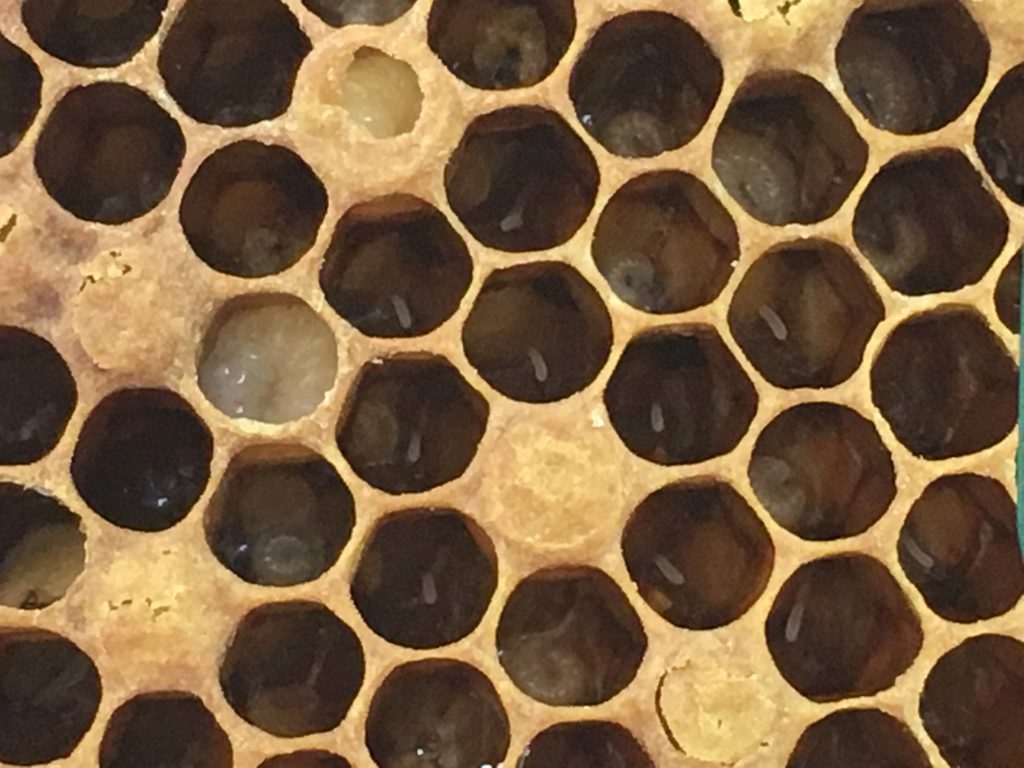
CHECK BACK IN 3-7 DAYS. In 3 days to one week, enlarge the entrance slightly (2-4 inches), add more feed, and check for eggs and larvae to make sure the queen was successfully transferred to the colony. The eggs look like a miniature grain of rice positioned vertically in the bottom of the cells. Larvae looks like a little white “C” shaped grub in the bottom of the cell.
Happy beekeeping! Dash & family


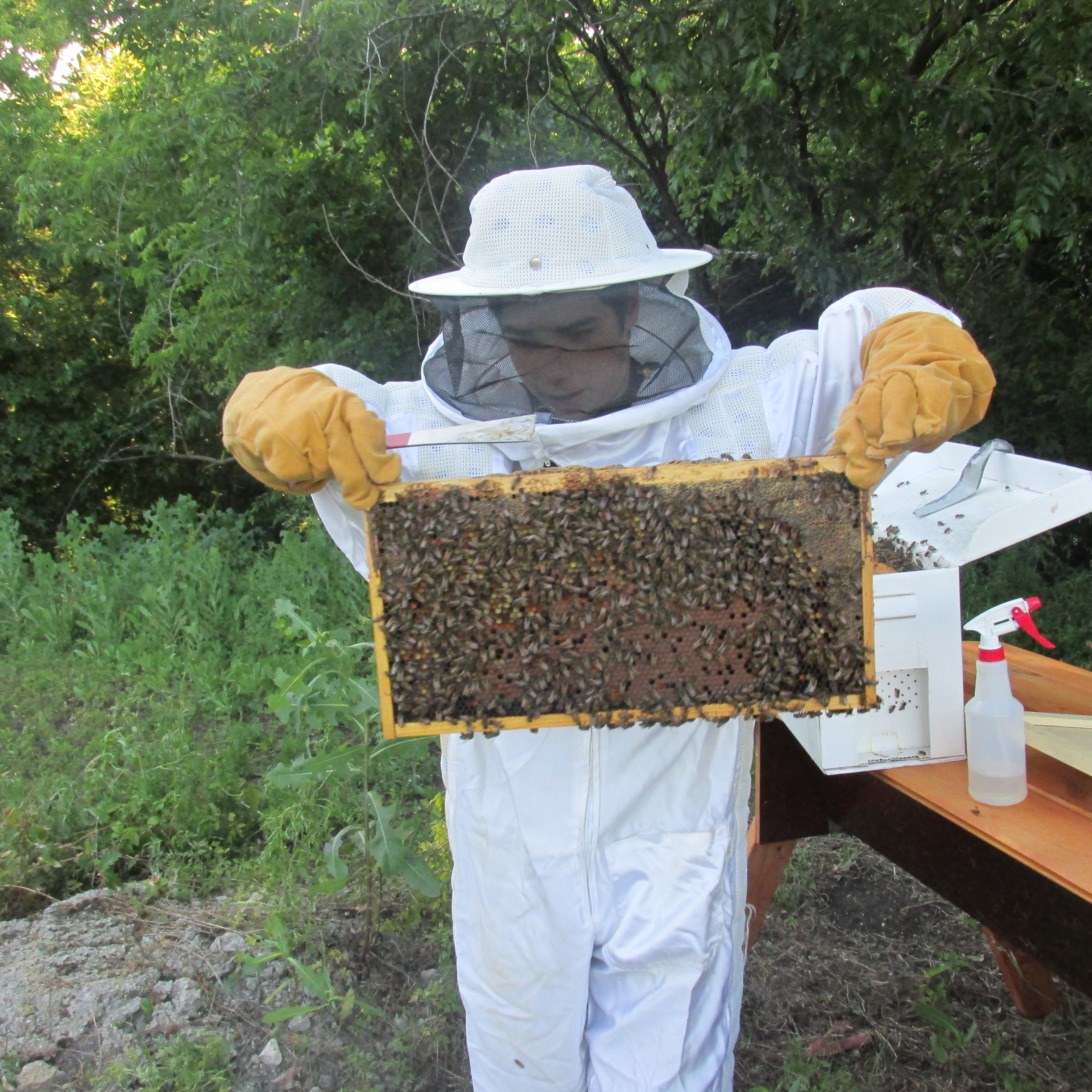

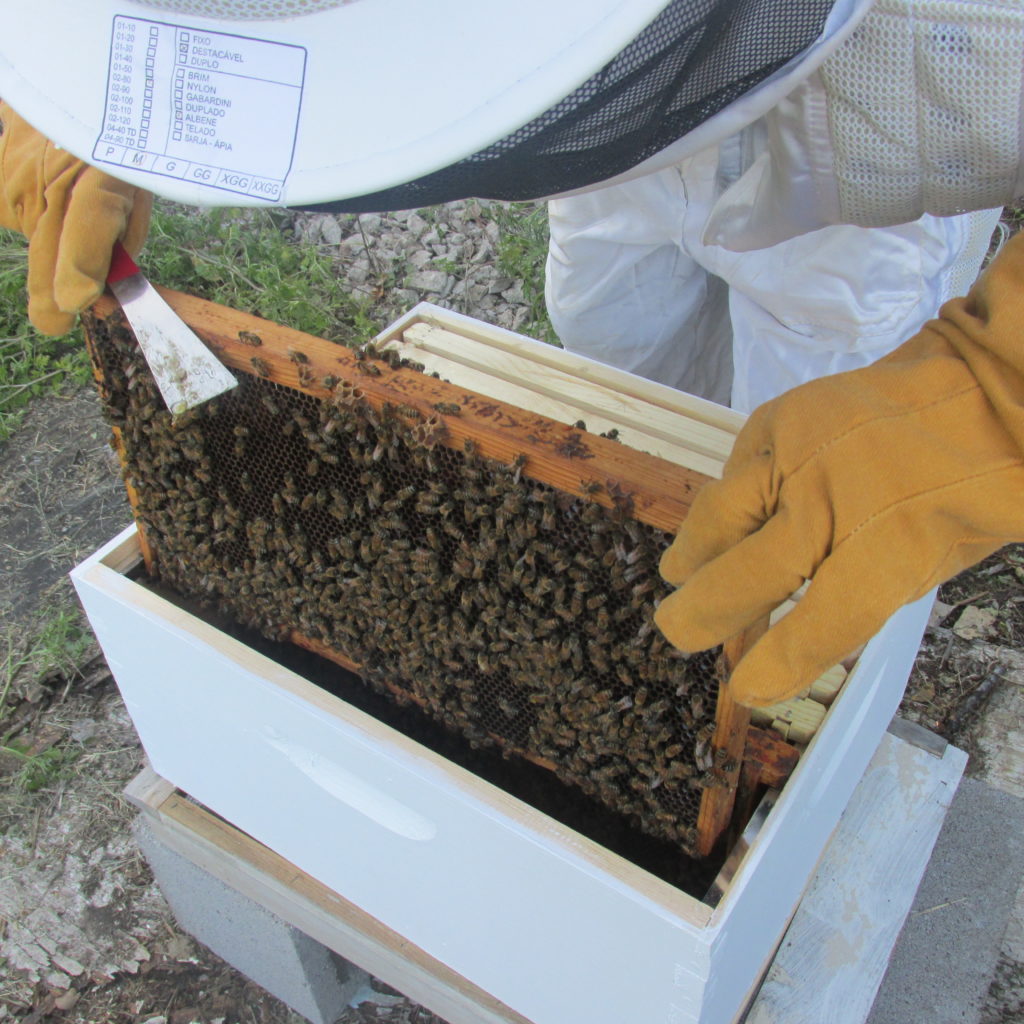
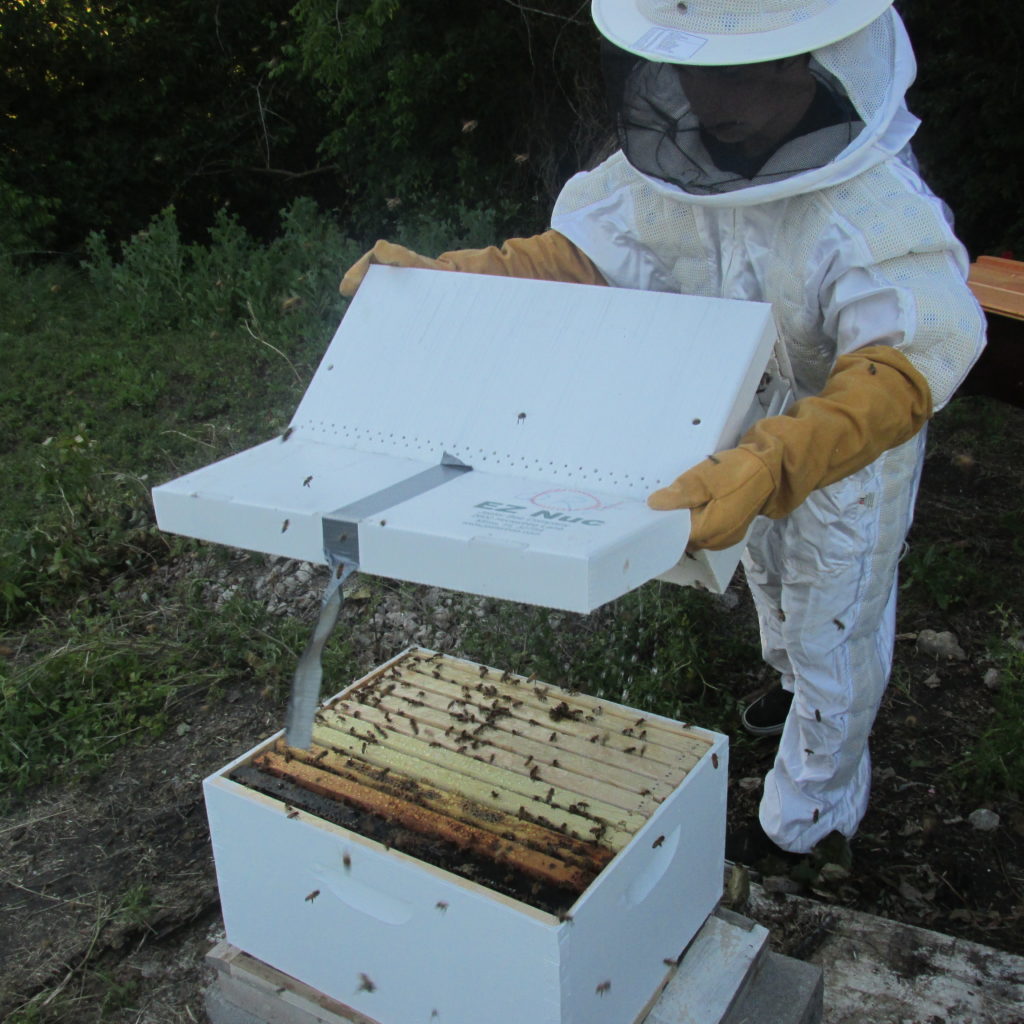

0 Comments